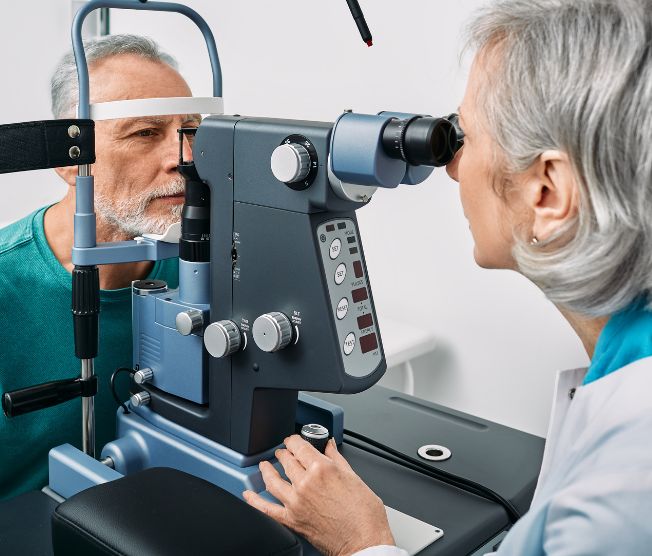 Falls can be life-changing for older adults, potentially resulting in decreased mobility or the inability to live independently. Although falls are often attributed to trip hazards and home design, a third factor comes into play: depth perception.
Falls can be life-changing for older adults, potentially resulting in decreased mobility or the inability to live independently. Although falls are often attributed to trip hazards and home design, a third factor comes into play: depth perception.
This form of visual impairment increases fall risks among seniors. Depth perception alters visual and sensory processing abilities, including seeing objects and understanding physical boundaries. This change affects balance, social functioning, driving abilities and other factors related to quality of life.
Learn more about the relationship between age, depth perception and contributing factors.
Understanding Depth Perception Issues
Depth perception issues can occur at any age. In order for us to perceive our surroundings, our eyes need to work together to process visual signals and transmit this information to the brain. For older adults, age makes this process less smooth and alters depth perception.
These changes can affect how you understand size, distance, color and contrasts. Objects can blend together or appear less clear, while shadows and distance aren’t always defined. For aging people, this can result in misjudging distances, accidentally tripping over objects or reaching for something that isn’t there. Common indications include:
- Misjudging how far away an object is
- Misjudging size and depth of objects
- Decreasing contrasts, which affect how defined objects appear
- Not distinguishing borders and boundaries. Multiple adjacent objects may look like a single large object
For seniors, these factors can affect how they get around their home and community. Diagnosis often starts with an eye exam to identify a specific condition like glaucoma or cataracts and determine if the change is age related. What factors affect depth perception?
Decline in Inhibition
Inhibition pertains to how the brain processes information. For most of our lives, our brains consider alternatives when looking at an object until it settles on a final perception. As we get older, this process becomes less refined, likely due to decreased functioning of the brain’s GABA neurotransmitters.
For older adults, this can mean that:
- Separate, individual shapes can be unclear
- Symmetry isn’t always obvious
- Processing time to perceive and understand an object takes longer
- Distractions can get in the way of visual perception
- Aspects like poor lighting and fog obscure shapes more sharply
Medical Conditions
For people of all ages, certain medical conditions can affect how you perceive colors, shapes and distances. Visual conditions in seniors can muddle the information the brain receives, including cataracts, glaucoma and macular degeneration in one or both eyes.
Dementia
Dementia also influences how your eyes pick up on surroundings and the way the information is transmitted to the brain. This combination can lead to hallucinations and further affect one’s mental state, resulting in more accelerated cognitive decline.
Multiple factors create this effect:
- For adults with dementia, their field of vision can narrow to just 12 inches across.
- As the condition progresses, your loved one may find it too stressful to process their surroundings. As a result, the visual information they take in is even more limited.
- In terms of depth perception, these factors make objects less clear. Your loved one may not be able to tell if something is a pattern, texture or three-dimensional object.
- Patients with more advanced Alzheimer’s disease may reach in the air, attempting to get an object that’s farther away than they perceive it to be.
With Glasses
Bifocal and multifocal glasses can pose additional depth perception issues, particularly while you’re in motion, walking or taking stairs. In these instances, the eye gets used to looking downward, which can throw off your perception of space, shadows and distances. People who need these prescriptions are advised to use their glasses only when reading.
Accommodations and Adjustments
To keep on top of depth perception changes with age:
- Schedule annual eye exams to check for conditions that could be affecting vision or changing your depth perception.
- Use bifocal or multifocal glasses only for reading or while sitting to reduce fall risks.
- Improve lighting throughout the home to create more contrast and improve visibility.
- Reduce clutter throughout the home.
If you’re concerned about changes in your own or a loved one’s vision, consult with the medical professionals at West Hartford Health & Rehabilitation Center today.
« What Are Activities of Daily Living?

